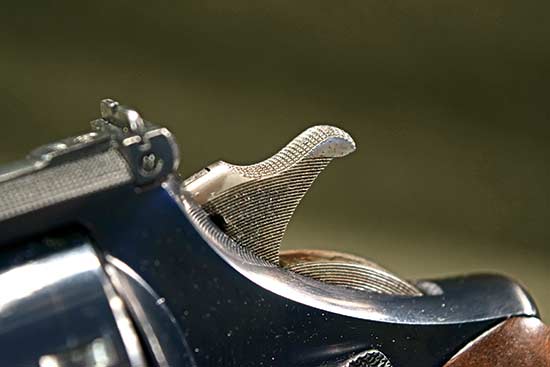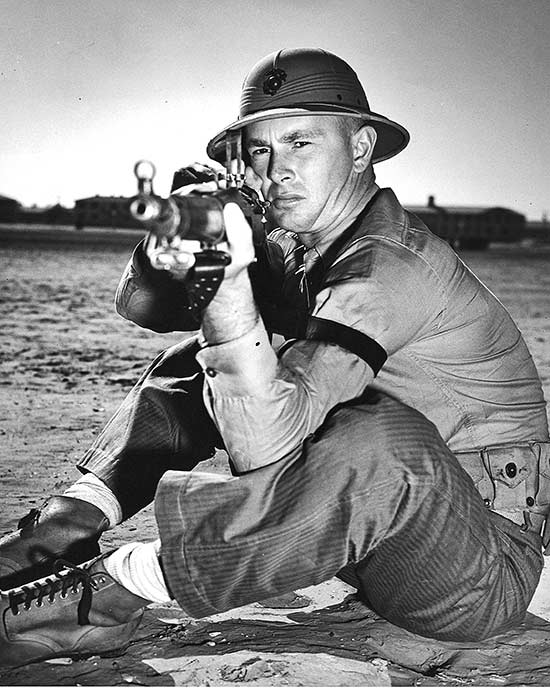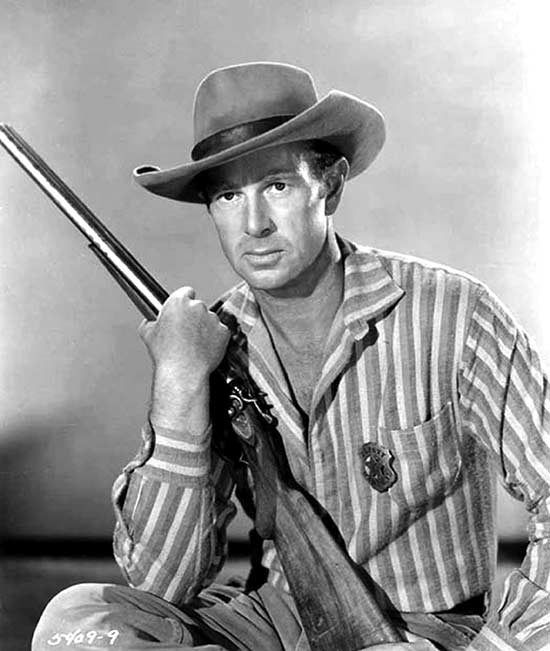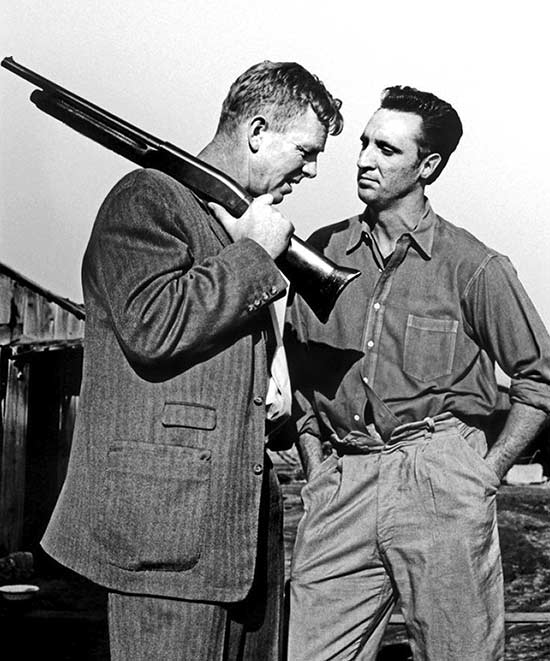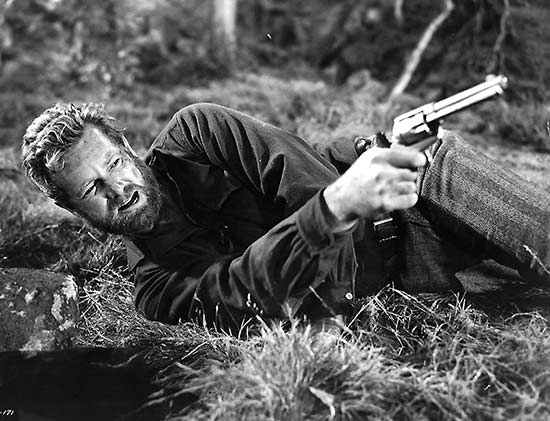Behind Enemy Lines: Sterling Hayden's Registered Magnum
Actor Sterling Hayden's Combat-Veteran S&W Registered Model

S&W parachutes behind the lines: Sterling Hayden’s .357 registered Magnum
sported a 6.5" barrel as well as a Call gold bead front sight, squared notch rear
sight and checkered “Magna” grips. According to S&W records, it was ordered
factory sighted at 25 yards with a six o’clock hold. Photo: David Elliott
It might be surprising to some in more recent generations there was a time when many of our celebrities and entertainers were more than just carnival barkers and snowflakes agitating for the latest peculiar social or political cause. People like Jimmy Stewart, Clark Gable, Lee Marvin, and of course, Audie Murphy, to name just a few, were big screen American heroes — for real. Many had real-life bona fides matching or even exceeding the impressive characters they played in the movies. Ideals such as patriotism, courage and sacrifice often shone brightly in the art of their time.
Many of the stars of the day “walked the walk,” and those who didn’t at least respected those who did. To be sure, Americans living in the time of Hollywood’s Golden Age commonly held an expectation the men and women who portrayed their heroes would actually be the real-deal and not merely loud-mouth actors.
One such real-deal was Sterling Hayden. Hayden — AKA Lt. John Hamilton — was a leading-man who made over 50 movies in the course of his storied career. There were highly memorable roles in such films as The Killing, Dr. Strangelove and The Godfather. He was indeed an American original who led a life as colorful and daring as any.
When WWII broke out, the upcoming star abandoned his lucrative Hollywood contract to fight the Axis. He enlisted in the Marines, was eventually commissioned as an officer and assigned to the OSS. He served in the Mediterranean Theater supporting resistance fighters throughout the Balkans. Hayden’s assignments chiefly included coastal reconnaissance and running supplies through the German blockades across the Adriatic Sea. On these missions he drew heavily on his considerable civilian experience as a yachtsman and seafarer.
His exploits were ultimately recognized with the presentation of the Silver Star for gallantry in action as well as a personal commendation from no less than Yugoslavia’s Marshal Tito. The Washington Post reported the following quote from one of Hayden’s 1944 rating records: “He is essentially a seaman and has demonstrated great skill in handling small vessels on clandestine missions along the Dalmatian coast. He has great courage and has shown an almost reckless disregard of his own life where duty is involved.”
A Registered Magnum
Hayden’s personal sidearm of choice was the relatively new Smith & Wesson .357 registered Magnum, a gift from his uncle before his deployment. According to Hayden, that uncle was also a part-time firearms instructor for the New York State Police.
In his critically acclaimed and introspective 1963 autobiography, Wanderer, Hayden describes himself as a new Marine officer reporting for duty in Italy: “He stood six foot five in his leather jumping boots and weighed close to 230 lbs. A British parachute emblem and a small American flag were neatly stitched to the sleeves of his combat jacket. There was also the conventional military insignia, and a .357 Magnum revolver strapped to his thigh.” No other clue or rationale is given as to why Hayden chose to carry the big S&W over the M1911. Perhaps fans of wheel guns and high-velocity handgun cartridges need none.
At any rate, Hayden, like many of us, found it easier to acquire a great gun than to hold onto it. He reluctantly sold the pistol to a fellow OSS officer in his unit so he could visit his wife, the legendary British actress and model Madeleine Carroll, who was then a volunteer nurse at an American Army Air Force Hospital in Foggia. The officer, an Army lieutenant at the time, also carried the pistol during combat jumps and brought it home after the war. He had it restored at the S&W factory in 1954 at the suggestion of S&W representative Arch Dubia, whom he met at the National Matches that year.
Memorable Pair
Almost needless to say, the revolver and Sterling Hayden proved a perfect match. Both figuratively, in the audacity of their character, and, literally, as a custom-crafted gun made to the user’s specifications, they were a matched set. Because of the rarity and exquisite workmanship of the Registered Magnum, as well as the then comparatively high-performance characteristics of the cartridge, it takes little imagination to believe the towering Hayden and his long-barreled S&W made quite an impression on the Yugoslav partisans with whom he fought.
It’s also a safe bet Hayden’s .357 — incidentally along with Patton’s famed ivory-gripped version — was one of probably only a few registered Magnums actually carried on the front lines. And most likely the only one carried behind them! Truly, it was a unique weapon, for a unique man, in an extraordinary place and time.


